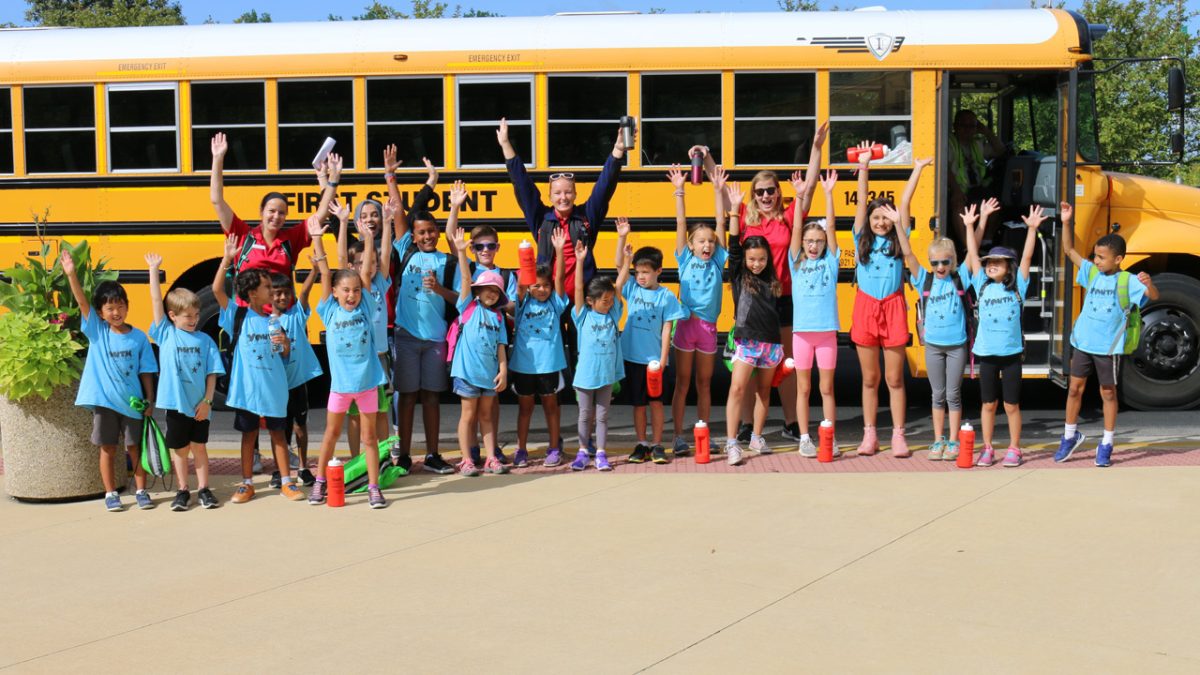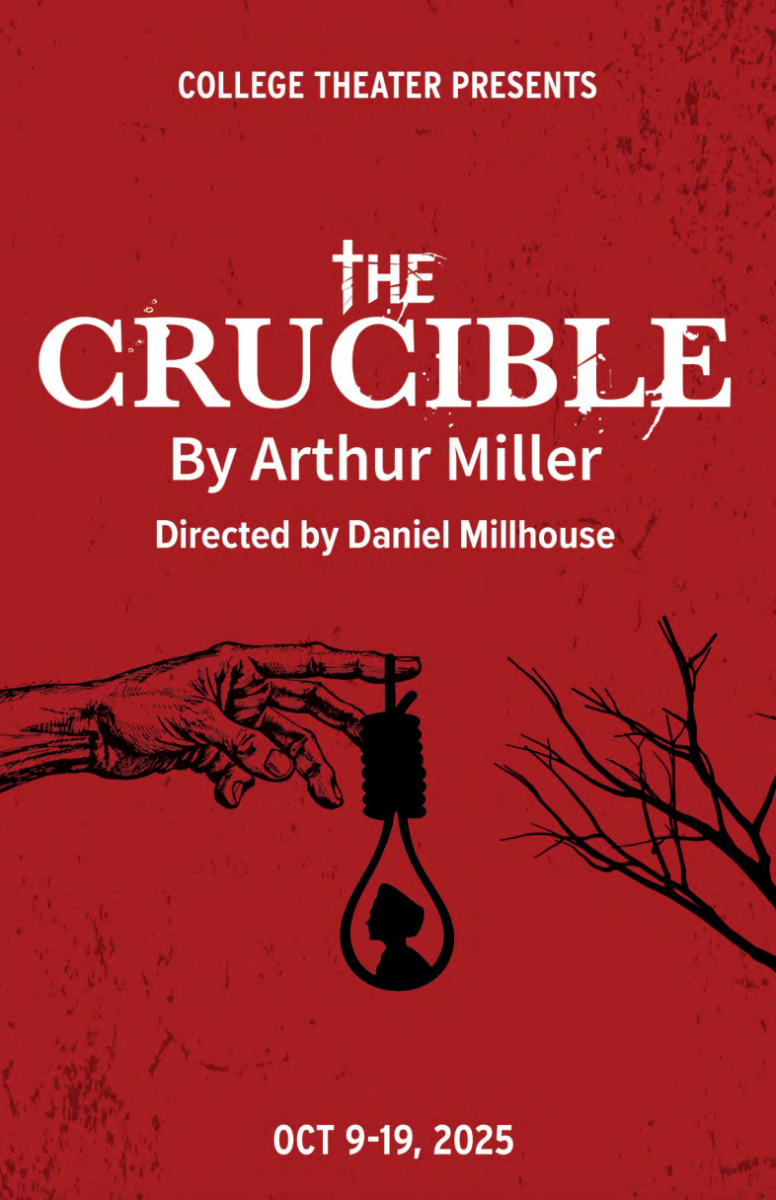Over the summer, COD has become a campus for young schoolchildren. Groups of them in color-coded t-shirts traverse campus grounds, some wearing aprons in the culinary center and others wearing miniature goggles in the manufacturing labs. The Youth Academy flourishes annually from June to August, providing non-traditional learning opportunities to kindergarten through twelfth-grade students.
Brenda Large, Coordinator of the Continuing Education Program, manages kindergarten through eighth grade programming. She described how the Technical Education Center (TEC) is very active, as sixth to eighth-graders get hands-on experiences through camps like Nuts, Bolts and Thingamajigs, GADgET Girls and Dream It, Build It, which cost $449 to $499.
“We have a lot in the TEC building. We have a really good partnership with manufacturing,” Large said. “They’re welding, they’re working with all of the equipment that is the kind of equipment that you find in industries. It’s industry standard. It’s a great intro to career tracks. We opened up Cutting-Edge Creator with the CNC program this year.”
During the last week of June, middle schoolers in the Youth Academy learned about the physics of race cars through a session with COD’s Engineering and Robotics club.
“I have a special event that we run in the spring with Robotics,” Large said. “The club members come in, generally third to fifth graders get to meet college students, and they build robots together, and they have a robot day. It’s been a great partnership there as well.”
Youth Academy students also get access to equipment in the culinary kitchens and the McAninch Art Center’s workshops or theaters. These unique programs are open to all students, including those in school districts outside of DuPage County.
“This past week our enrollment number was right about 3,500,” Large noted. “Now, that’s enrollments, not bodies, because we have some students that are here for multiple courses this summer.”
There are also students on the Naperville and Westmont campuses, making the Youth Academy one of the largest programs of its kind in Illinois. Large described how the Youth Academy goes beyond typical summer camps.
“It does help with childcare, but we’re an academically enriched day camp,” Large said. “We make sure that, yes, the students get to go outside and play. Not all parents want sports and games all day. They like something academic. We have an academic edge to our day camps.”

In Explorer Camp for five to ten-year-olds, which Large affectionately describes as the kids in little blue shirts, each week there is a new learning theme ranging from “Ocean Explorer” to “The Olympics.” Large also handles the Elementary Excellence program for third to fifth graders in the ninetieth percentile of standardized tests, meaning they scored higher than 90% of children in their grade nationwide.
“Sometimes parents have a hard time finding something to challenge those high achievers, and we certainly can provide that,” Large said. “We also have a nice blend of other opportunities for everyone. Students who are on different academic tracks and not in the high-achieving track still have a lot of enrichment opportunities here, and I think that’s very important.”
Certain programs, like STEAM Ventures for elementary students, run for only a few days or one week and have over 15 different topic courses that students can enroll in. Other programs, like the Academic Enrichment for grades one to eight, run for nine weeks and require more commitment, similar to college courses. For most programs, single-day attendance is $79, while longer camps range up to $199.
Jennifer Lange, Youth Program Coordinator of the Continuing Education department, described the High School Credit Courses that often take place in the BIC.
“These are classes that students take for either high school credit or credit recovery. They take it for enrichment or advancement purposes,” Lange said. “We offer our career academy courses, so these one to two-week-long camps for high school students taught by our credit faculty here at COD. It’s a pathway to our credit programs.”
Most Youth Academy programs for high schoolers range from $199 to $349. These classes aren’t college or dual credit but are a fun way to learn a new skill without taking a graded class or a job.
“At this point in the game, they’re usually either working or they’re doing stuff for college,” Lange explained. “So for somebody who may not want to be a chef for a career, but they really want to learn how to cook, then it’s a great opportunity to learn in a professional kitchen from professional chefs. It just lets you pursue some interests you may not have time for in the regular year.”
This demonstrates the social impact of COD as a learning center for people in all stages of life, Lange described.
“We have grandparents who have taken programs here, and they have enrolled their grandchildren here,” Lange said. “It’s almost like a direct pathway to where they start off with the summer camps, then go to junior high, high school and then they end up taking college classes here. After college, they come back for lifelong learning, so we are able to reach all the students within a full circle.”
This important function of the Continuing Education programs is instilled into the Youth Academy, as described by Kainat Mohammad. She has worked in the Youth Academy for 10 years, currently as a supervisor who coordinates daily activities and oversees the staff.
“We have dedicated, experienced staff who create a positive, inclusive environment. Safety and well-being are our top priorities, and we offer diverse programs. By enrolling their children, parents can be confident they will gain valuable skills, make new friends and create lasting memories,” Mohammad said. “I also communicate with parents to keep them updated on their children’s progress and address any concerns they may have.”
The Youth Academy also provides jobs to new graduates and education majors, which most of the counselors are, as well as a flexible summer job for teachers.
“We have a lot of instructors who are employed by local school districts. They really like this as a nice summer opportunity because it’s a week-to-week commitment for them. They can still go on that family vacation and not worry about, ‘Well, I needed a summer job,’” Large explained. “They also sometimes get to do some cool stuff that they maybe feel like they can’t always do in the classroom and really do those experiments. There’s not a curriculum they have to follow for us.”

All the instructors at the Youth Academy have bachelor’s degrees and some are COD professors. College students are encouraged to apply for paid youth aide positions, especially if they’re in education, social science or psychology degree paths.
“Biggest thing, we want people who enjoy working with children,” Large added.
Nurturing the young students is an important commitment for the Youth Academy, as described by Mohammad.
“My favorite part of the job is witnessing the excitement and growth of the campers as they participate in various activities and make new friends. It is incredibly rewarding to be a part of their journey and see our programs’ positive impact on their development,” Mohammad said. “The positive impact we make on the campers’ lives and the supportive community we build are truly remarkable. I encourage all parents to explore the opportunities we provide and consider enrolling their children in our programs.”
The Youth Academy’s non-traditional learning format can be even more motivating to the students, according to Large.
“I had a parent just talking to us this past week saying her child really enjoys our classes here, and maybe isn’t having quite as much fun at school,” Large said. “Talking with us about the difference of that hands-on environment and promoting learning as a whole and helping students who sometimes aren’t as enthused about education get enthused about education because we’re providing a different environment.”
She described that all the programs strive to be interactive learning experiences, rather than only lecture-based. Students often have creative projects and bring tangible things home from the program.
“This year we expanded to Westmont center, and there’s also plans to make that even larger, make our offerings there more expansive,” Lange said. “There’s always opportunities to expand to our different campuses and utilize those resources as well.”
Lange also described that the Youth Academy is a self-funded Return on Investment in Education (ROI) institution, so the tuition collected goes back into the program. Any grants they receive are often used for workforce training, GED and ESL programs. Since it’s a non-college credit program, students are not available for financial aid. However, the Continuing Education Center’s department plans to create student scholarships in the future, and they invite more people to send their young learners to the College of DuPage.
Visit the COD webpage for the Youth Academy’s full catalog of programs.









